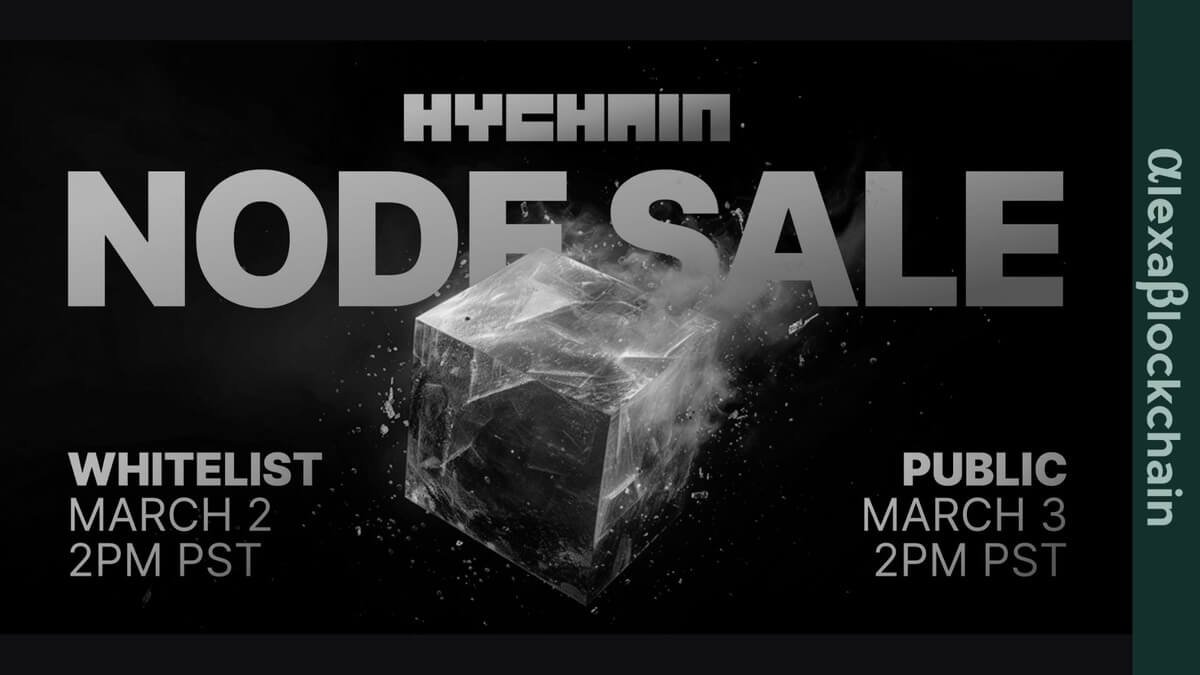Ordinals Unleashed: How Ordinals is reshaping Bitcoin’s blockchain?

This article was published in Bitcoin Magazine. “The inscription problem”. click here To get an annual Bitcoin Magazine subscription.
This article was written based on data as of November 15, 2023. The data in this article was prepared by SQRR Research (https://sqrr.xyz).
Bitcoin, not blockchain
Bitcoin, not blockchain. This has been a prominent meme over the past two eras, ushering idiots away from fraudulent “cryptocurrencies” promising better “blockchain technology” and toward a Bitcoin-only lifestyle. However, we are more focused on blockchain than ever before. But this time it’s different. The world has laser eyes on the Bitcoin blockchain. The driving force behind this interest is a new metaprotocol called Ordinals, which is based on the Bitcoin protocol. Ordinals are a new approach to “naming” individual satoshis in a set of Bitcoin UTXOs, but more interestingly, they also include a way to “put” data files into the Bitcoin blockchain. In this article, we analyze how Ordinals will impact block space demand on the Bitcoin blockchain in 2023, and explore the challenges and opportunities these developments present.

Technical overview of ordinal numbers
Ordinal is a protocol added on top of the Bitcoin protocol. It consists of two distinct parts: Ordinal Theory and Inscriptions. Ordinal Theory is a protocol for assigning serial numbers to Satoshi, the smallest fraction of Bitcoin, and tracking Satoshi used in transactions. This has led to controversial conversations about fungibility, as the market may place a greater value on one Satoshi over another, but the market is gaining interest in this part of the Ordinals protocol. The second and main focus of this article concerns inscriptions. Inscriptions allow you to attach arbitrary content to individual satoshis, turning them into Bitcoin-based digital artifacts. Perhaps the easiest example to explain the inscription would be to inscribe (store) a photo on the Bitcoin blockchain (a large storage hard drive or database) and assign that photo to a single Bitcoin Satoshi. That single satoshi shows when the inscription was engraved on the blockchain, and a single satoshi representing that inscription or photo can be sent from one person to another. Although many people see no value in the collection or trading of these inscriptions, and some even call them “spam” or a “denial of service attack” against Bitcoin, a new market has emerged in the Ordinals protocol. This year has had a meaningful impact on the shape, demand, and cost of blockspace. What is more interesting are the possibilities that the epitaph will bring to Bitcoin, some of which have not yet been imagined, while others will be discussed further.

As Ordinals prepares its whitepaper in late 2022 and goes into production in 2023, we are seeing a notable increase in the growth rate of the Bitcoin blockchain. In February of this year, we can see a noticeable change in the daily blockchain growth trajectory. It’s important to note that it’s not just that the block size has increased, it’s that more block space is being used every day. Block space is limited by the Bitcoin protocol’s code to approximately 4 MB per block. This chart shows a significant increase in blockspace usage in February 2023.

If we zoom in on the chart, we can see that the average block size is increasing in a meaningful way in February 2023, which is due to the widespread use of the Ordinal protocol. We’ll look at blockspace in more detail in the next section. But the important thing is that the trajectory of blockspace growth has increased and this new demand does not appear to be going away anytime soon.
Blockspace demand analysis
The emergence of Ordinals influenced market demand for a limited supply of block space through inscriptions. These inscriptions take up a byte in each block, and those who inscribe them pay a dynamic market rate for that space. In 2022, Ordinals did not yet exist, so we only saw demand for block space from “economic” transactions. Now with Ordinals live, we can see “economic” transactions competing with the Inscriptions for block space. Because block space is limited, each block can only contain so many bytes, or transactions. Now, as inscriptions demand more space, the free market for block space is doing its job, and the market is clearing approximately every 10 minutes.
As we take a closer look at how Inscription will impact the economics of Bitcoin blockspace, we will first dig into blockspace demand in 2023. As mentioned earlier, Ordinals only launched in 2023, so it’s easy to see how these deals came to be. Space in blocks.

In February we will see where Ordinals start to take up significant space in the block space. In January, we saw an average of 0.5 MB of inscriptions being added to the blockchain per day, but from February through the rest of the year, we saw an average of 85 MB of inscriptions being added per day.
economic impact
The economic impact of Ordinals is significant, especially in terms of transaction fees and miners’ revenue. Transaction fee analysis for 2023 shows an upward trend affecting both users and miners. Miners in particular have seen notable benefits from this increase, as higher fees lead to larger profits. In fact, for the past few years we have been hearing calls that Bitcoin would fail if fees did not increase in a meaningful way, and with the Ordinals innovation we have seen fees increase significantly. In January 2023, an average of 12.97 BTC was paid in fees per day, with 0.005 BTC generated from the inscription. However, from February to November 15, daily fees increased by 240% to an average of 44.22 BTC, of which 8.67 BTC came from inscriptions.

Considering that the total amount of new Bitcoins currently mined every day is approximately 900 BTC, total transaction fees are only 4.5% of miners’ profits. That’s not enough revenue to move the needle for a small or medium-sized miner, but it’s a significant return for an industrial-scale miner who benefits from lower power costs due to larger purchases. Especially in May 2023, we can see a direct correlation between hash prices and transaction fees. The rest of the chart does not show an exact correlation. This is primarily because the hash price is a function of BTC priced in USD and the overall network difficulty. We know that as mining becomes more profitable, additional miners come online to take advantage of the increased revenue, and this year mining difficulty exploded from 252EH/s in January 2023 to 457EH/s in November 2023. An 81% increase in just one year.
Future prospects and implications for half-life
As we approach the April 2024 halving, it will be interesting to see what happens to block space dynamics as daily mining supply is cut in half. How would a hypothetical rise in BTC price make sats much more precious? Will the demand for inscriptions continue, or will they become too expensive in USD terms? Another thing to consider is the emergence of new data markets within the Bitcoin ecosystem that have the potential to bring new applications and future uses of Bitcoin block space beyond traditional transactions and inscriptions. The potential of Ordinals to store a variety of data types and the developing market for this data opens up exciting possibilities for the future, from digital art storage to complex data applications, signaling a new era of Bitcoin block space utility.
What’s interesting to think about is what happens to fees and subsidies after the halving in 2024. If we calculate the average daily profit by combining transaction fees and registration fees earlier, this is equivalent to approximately 4.5% of the miner’s daily profit. But what happens after the halving? And what happens if we live in a vacuum and keep fees constant until the 2028 halving?



If we continue at this point, we can see that after the fourth halving, transaction fees will become much more important to mining revenue and will be of significant value in the 2028 halving environment. It is difficult to imagine blockspace demand remaining constant over two halvings, and using current demand is quite conservative. This also ignores the invention of new ways to use block space that we haven’t even imagined yet.

market clearing
Lastly, the emergence of the Ordinals inscription fundamentally reshaped the Bitcoin blockchain, resulting in significant changes to both the technological landscape and economic dynamics. As we delve deeper into the new world of Bitcoin evolution, we must consider the broader implications of new uses and potential implications of ordinal and block space. With the upcoming halving poised to introduce new supply complexities, Ordinal’s role in shaping Bitcoin’s future is becoming more interesting. From my perspective, this is a thrilling chapter in the blockchain saga, full of uncharted territory and tremendous possibilities. This isn’t about JPEG. This is about free markets resisting censorship. As the Bitcoin protocol continues to evolve, it remains to be seen how the market will adapt to these changes and whether other new uses for blockspace will emerge. One thing is clear. The journey ahead will be unpredictable and strange. But eventually the market cleared up.
This article was published in Bitcoin Magazine. “The inscription problem”. click here To get an annual Bitcoin Magazine subscription.



